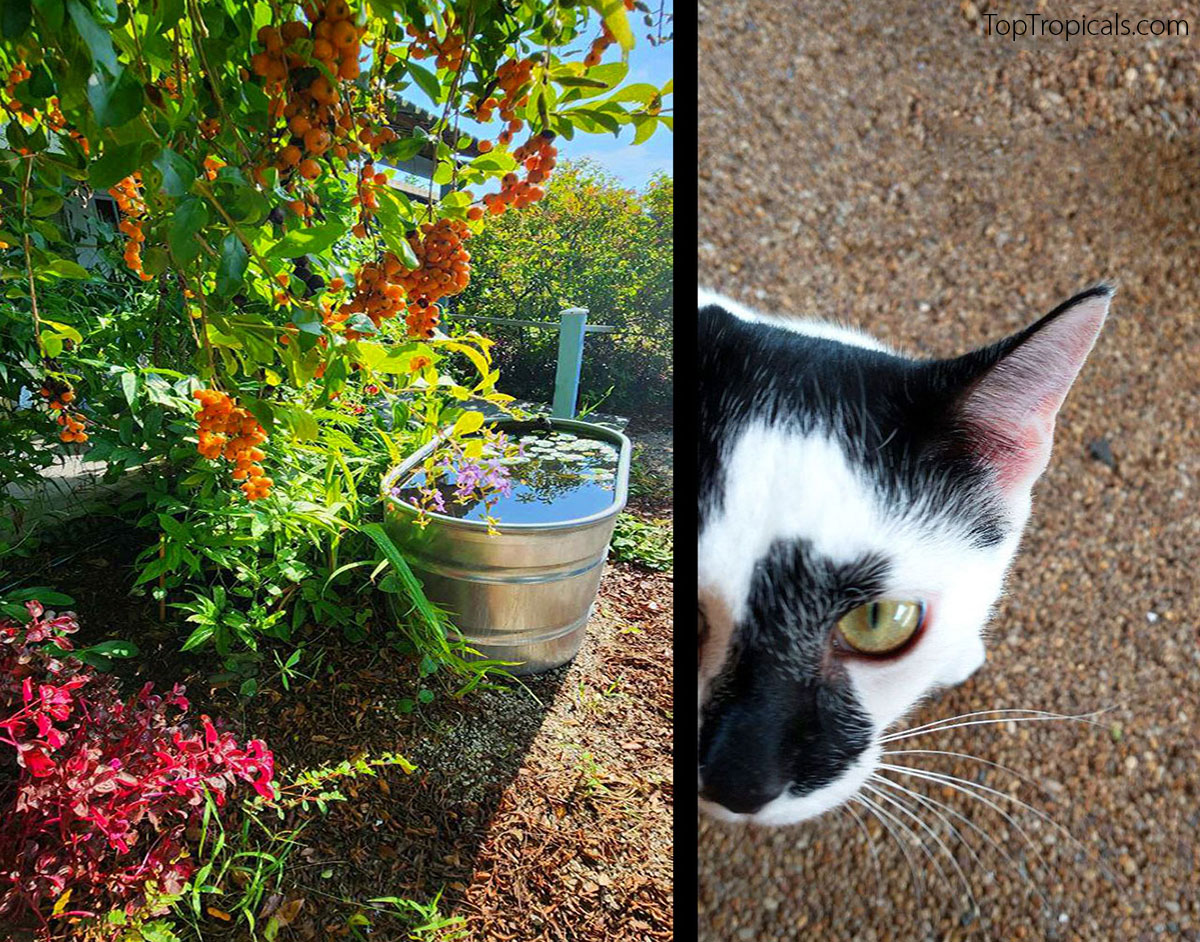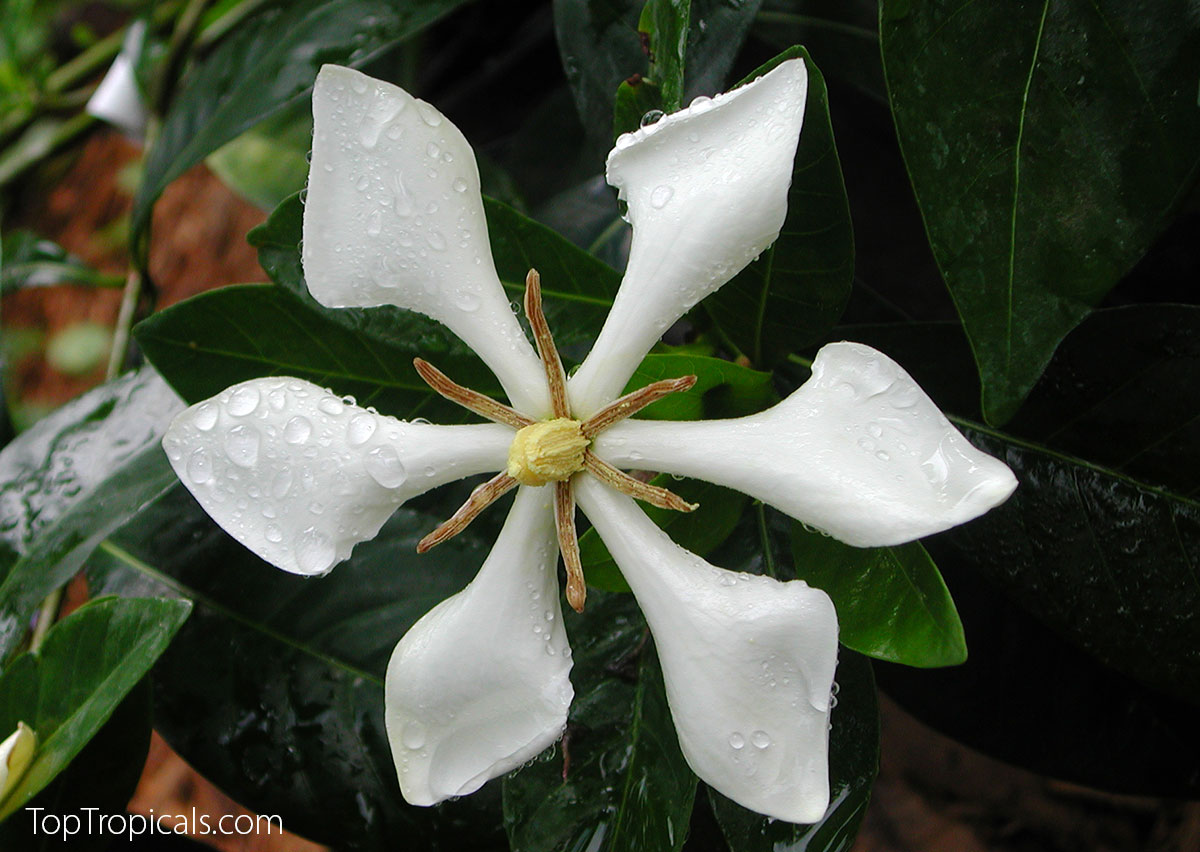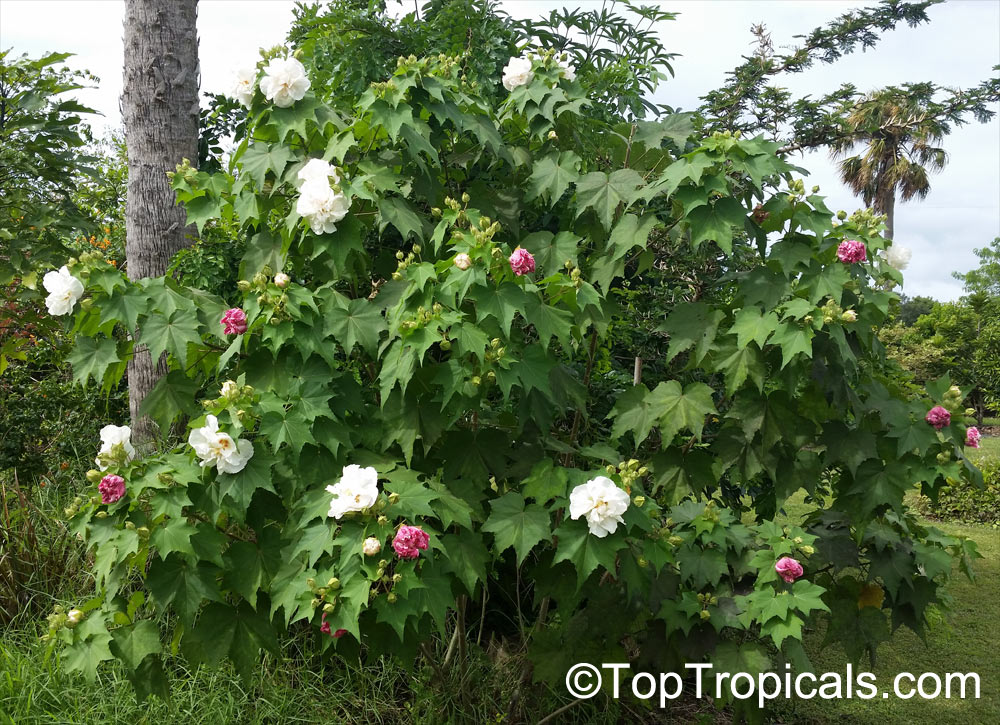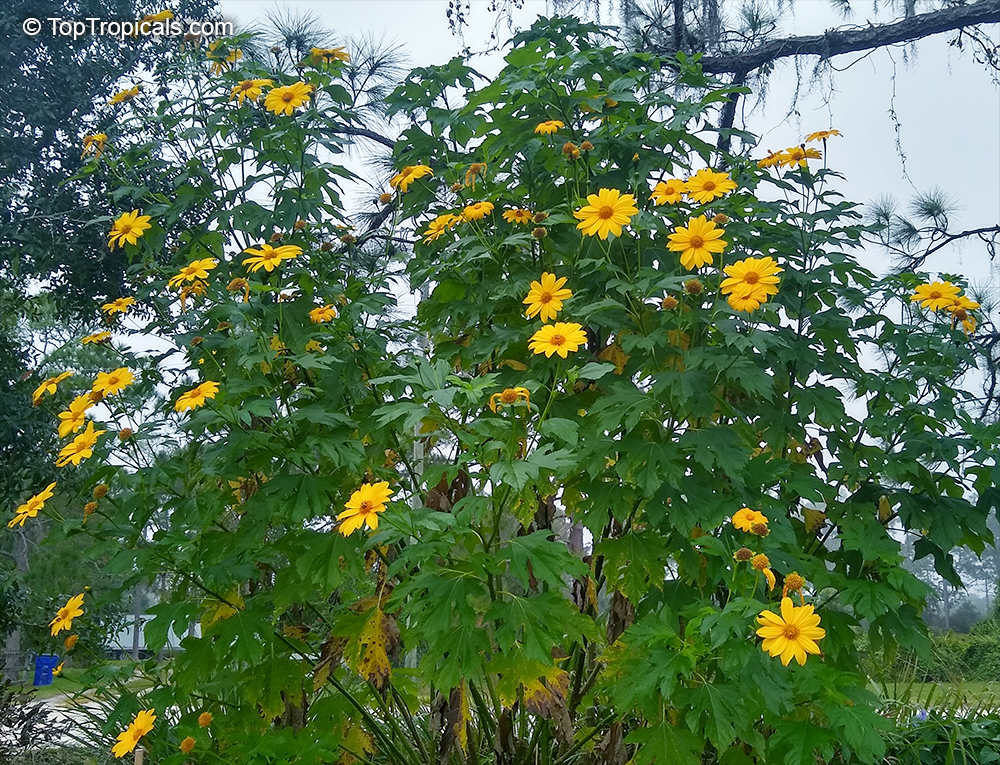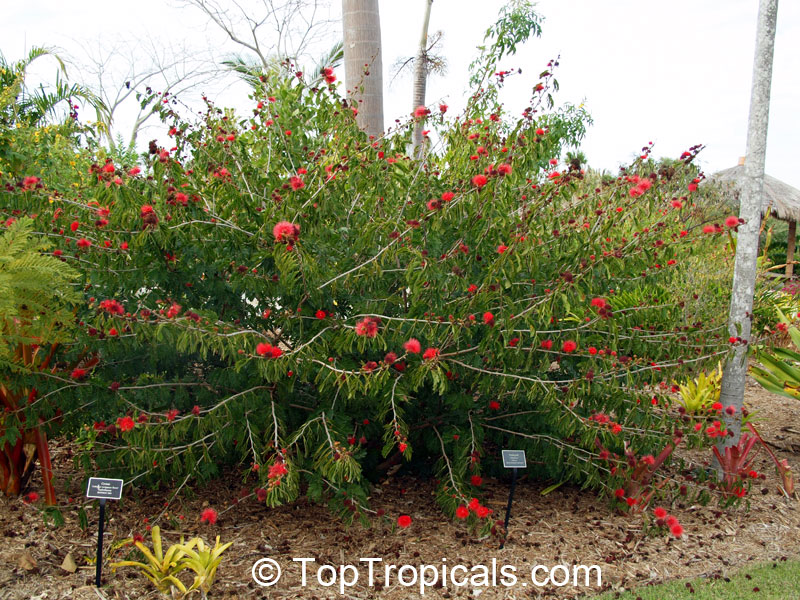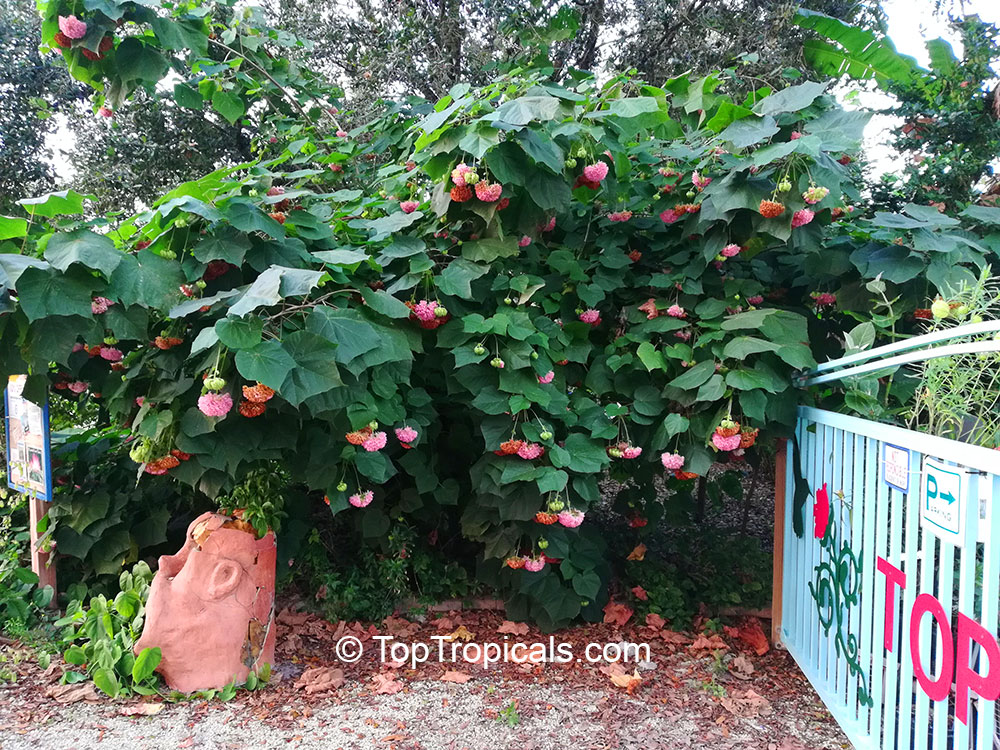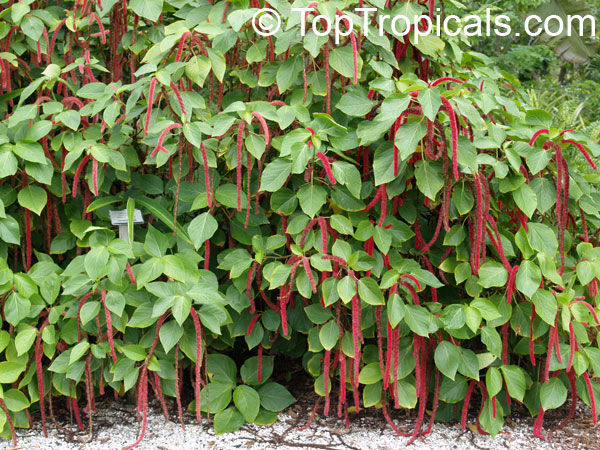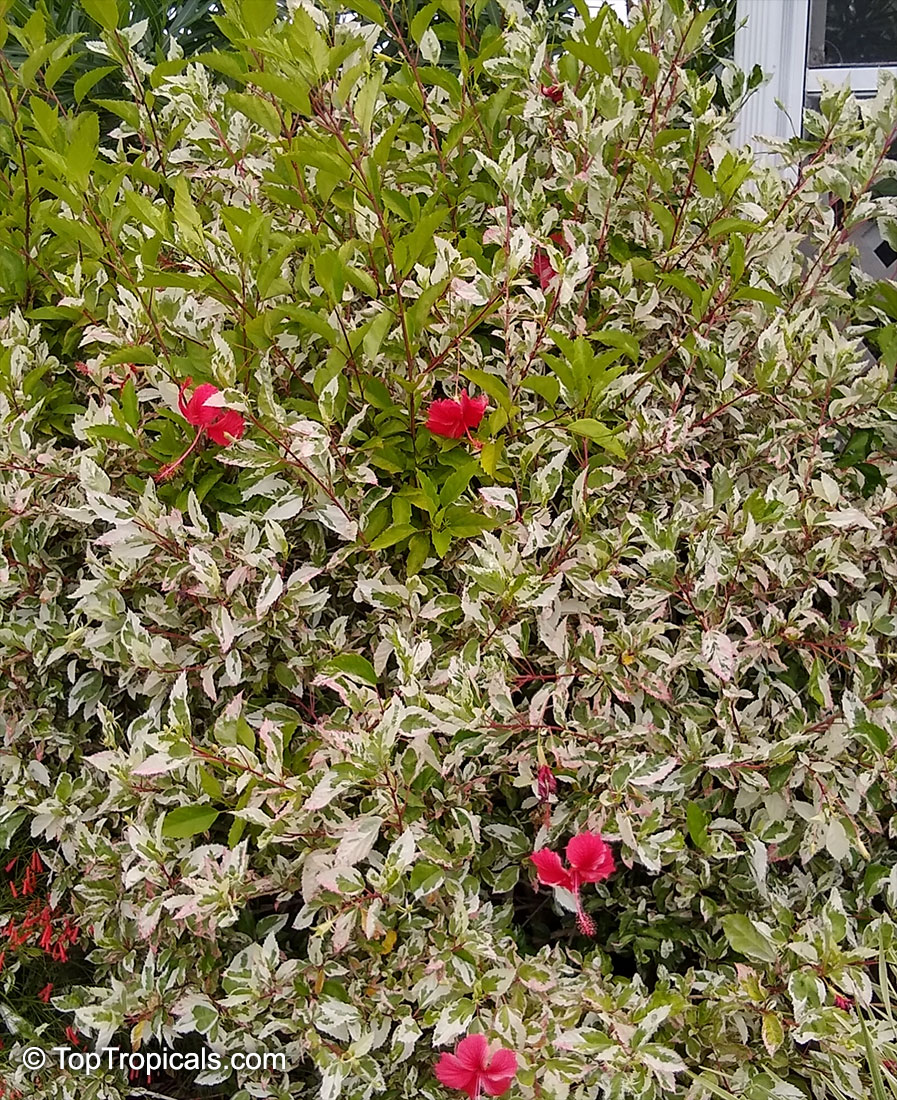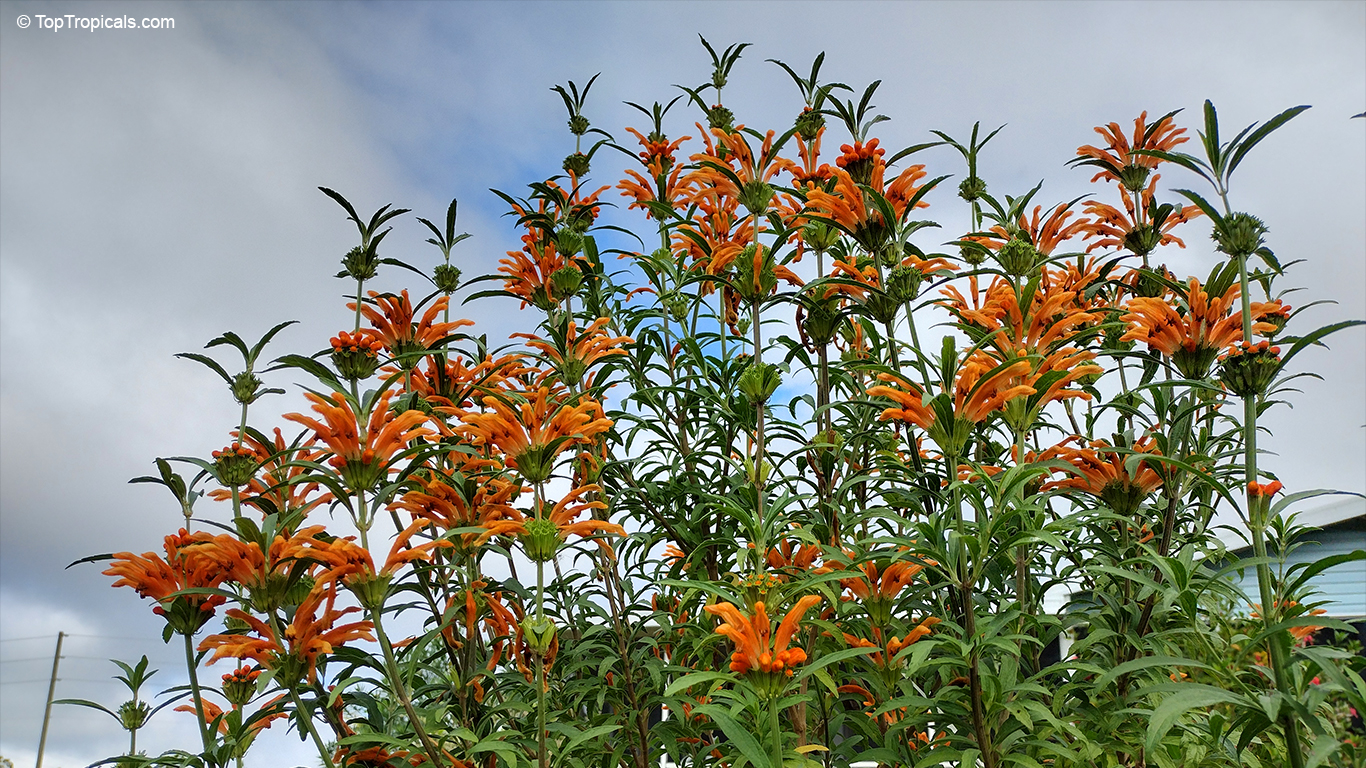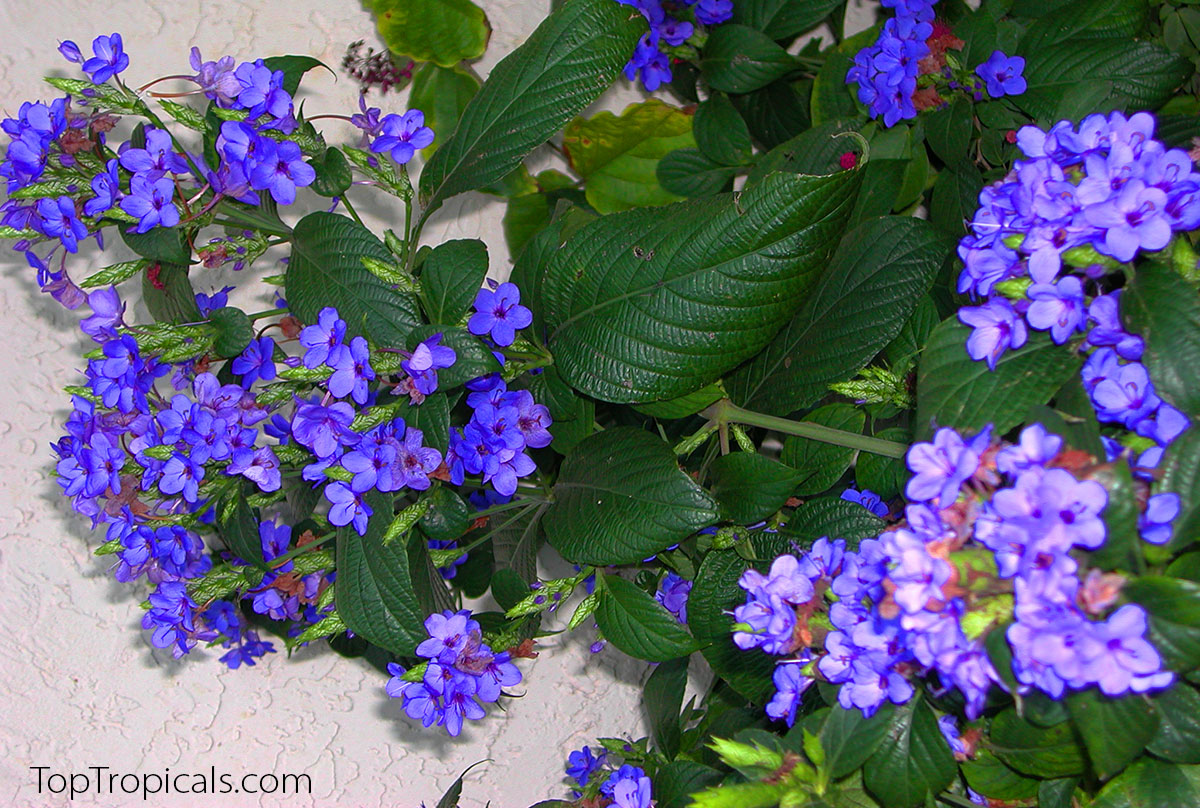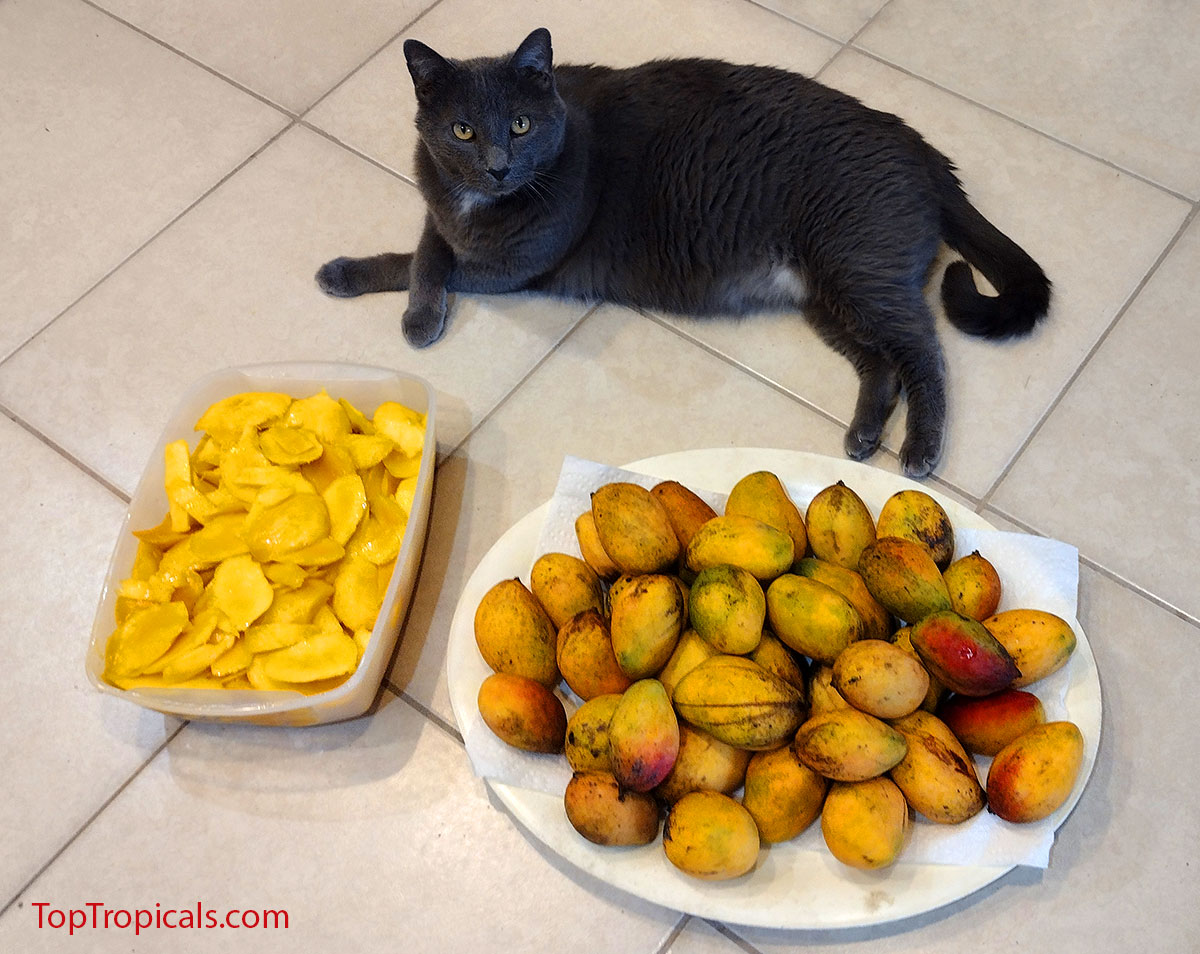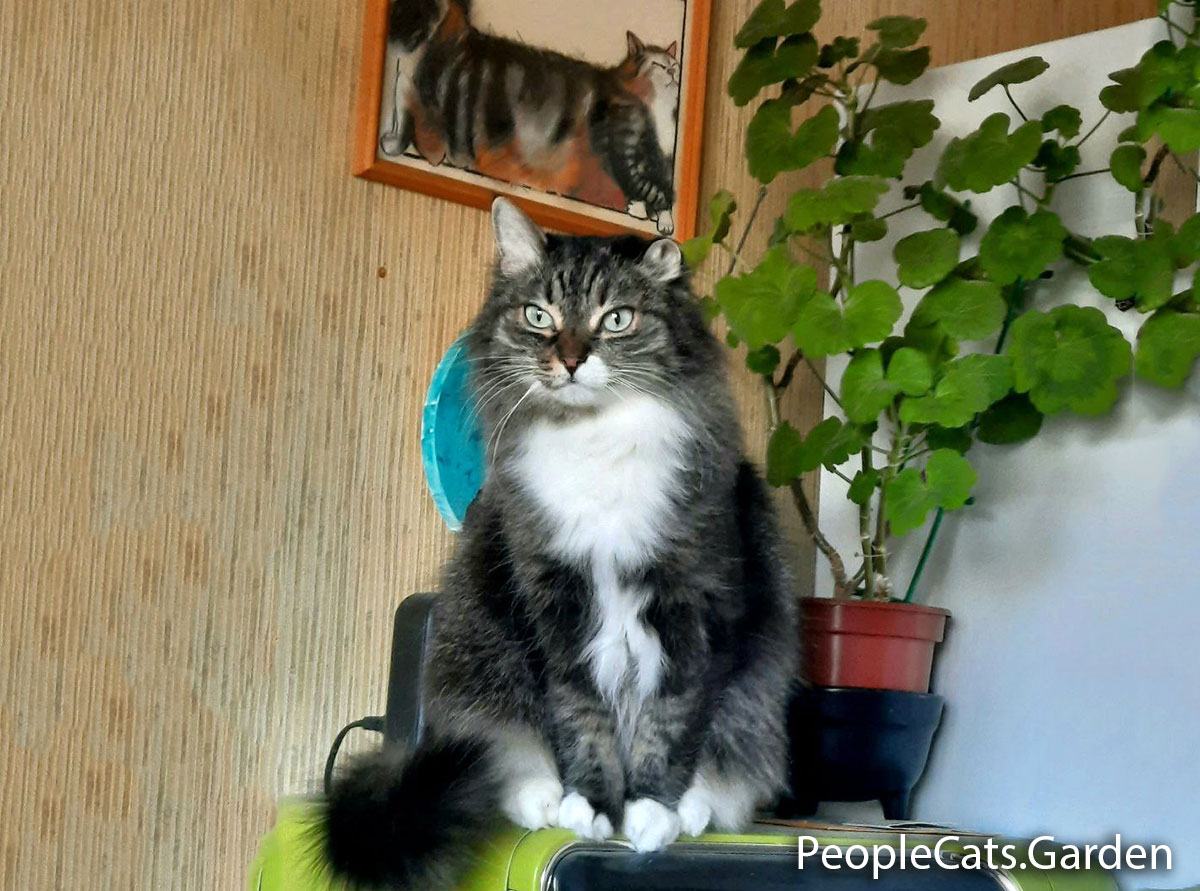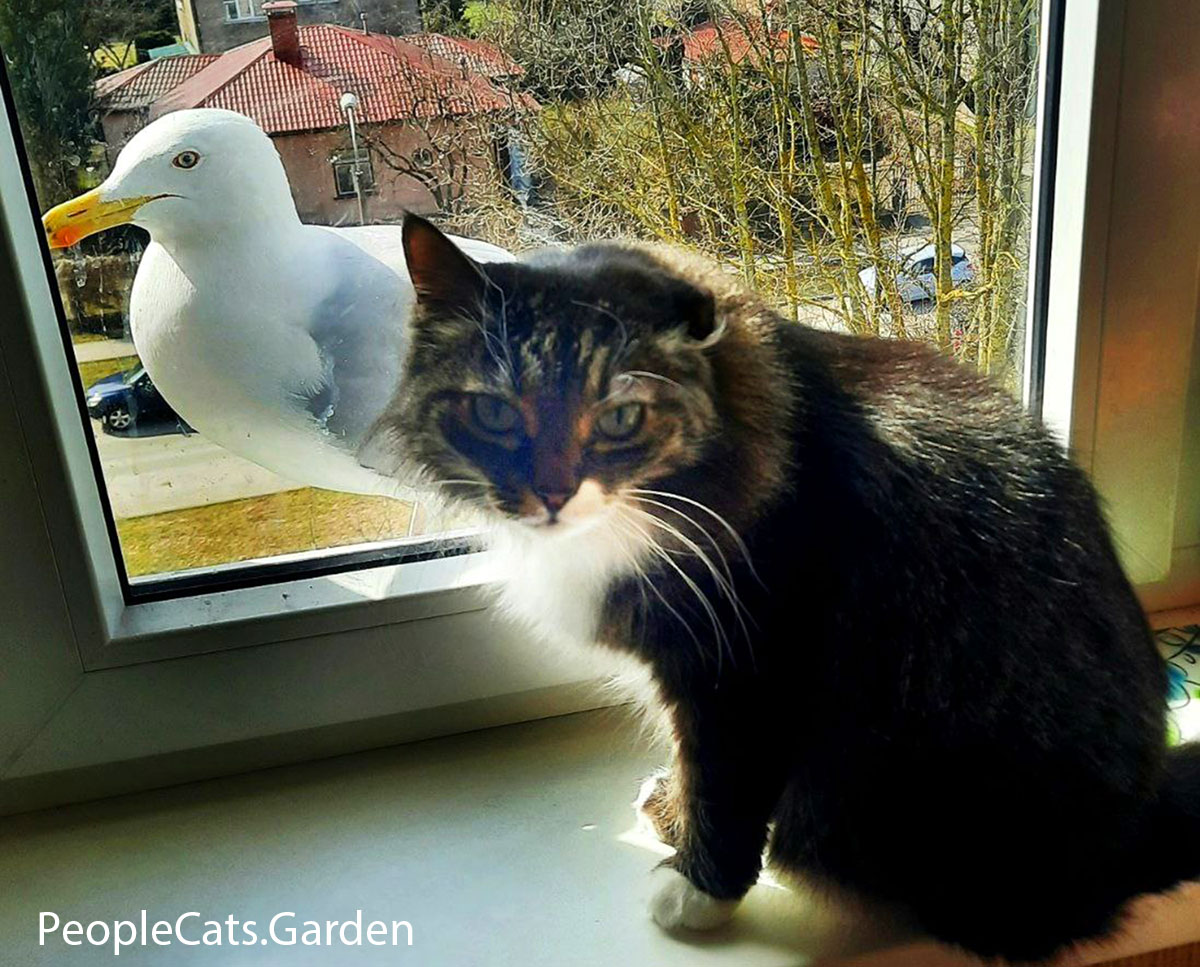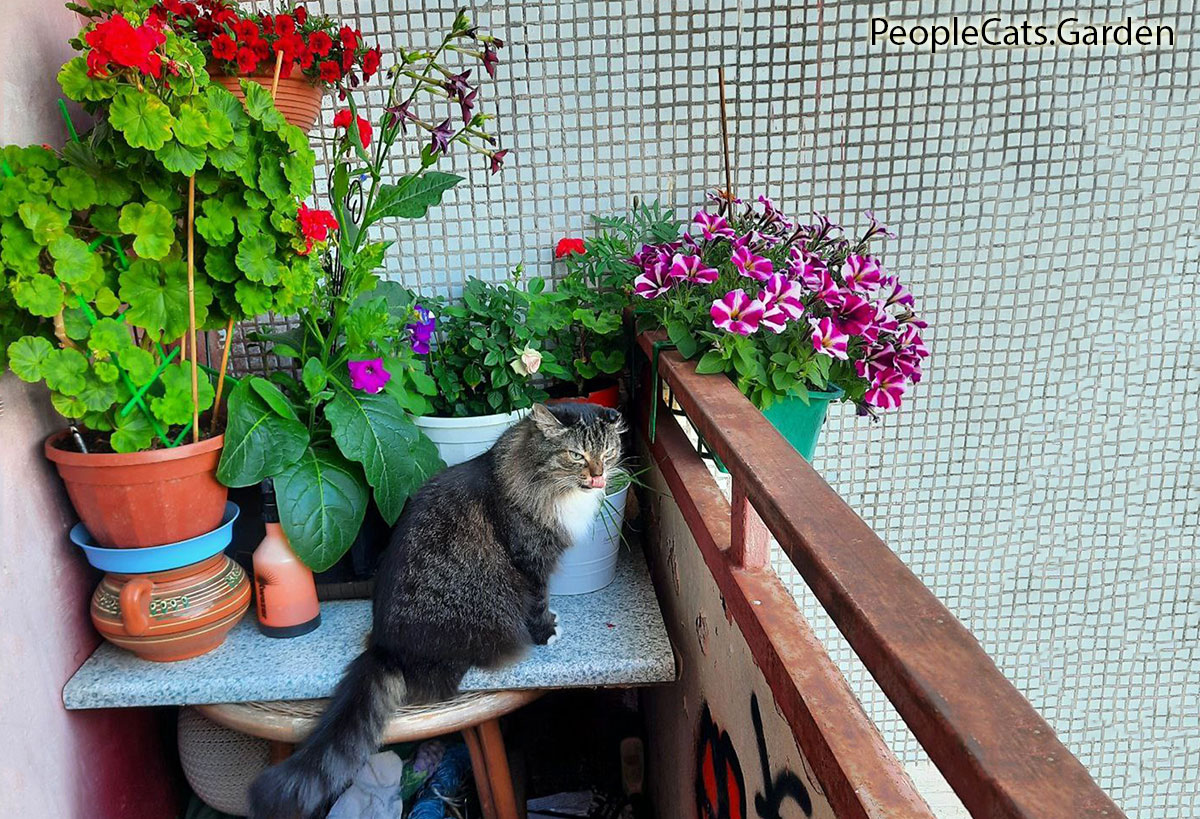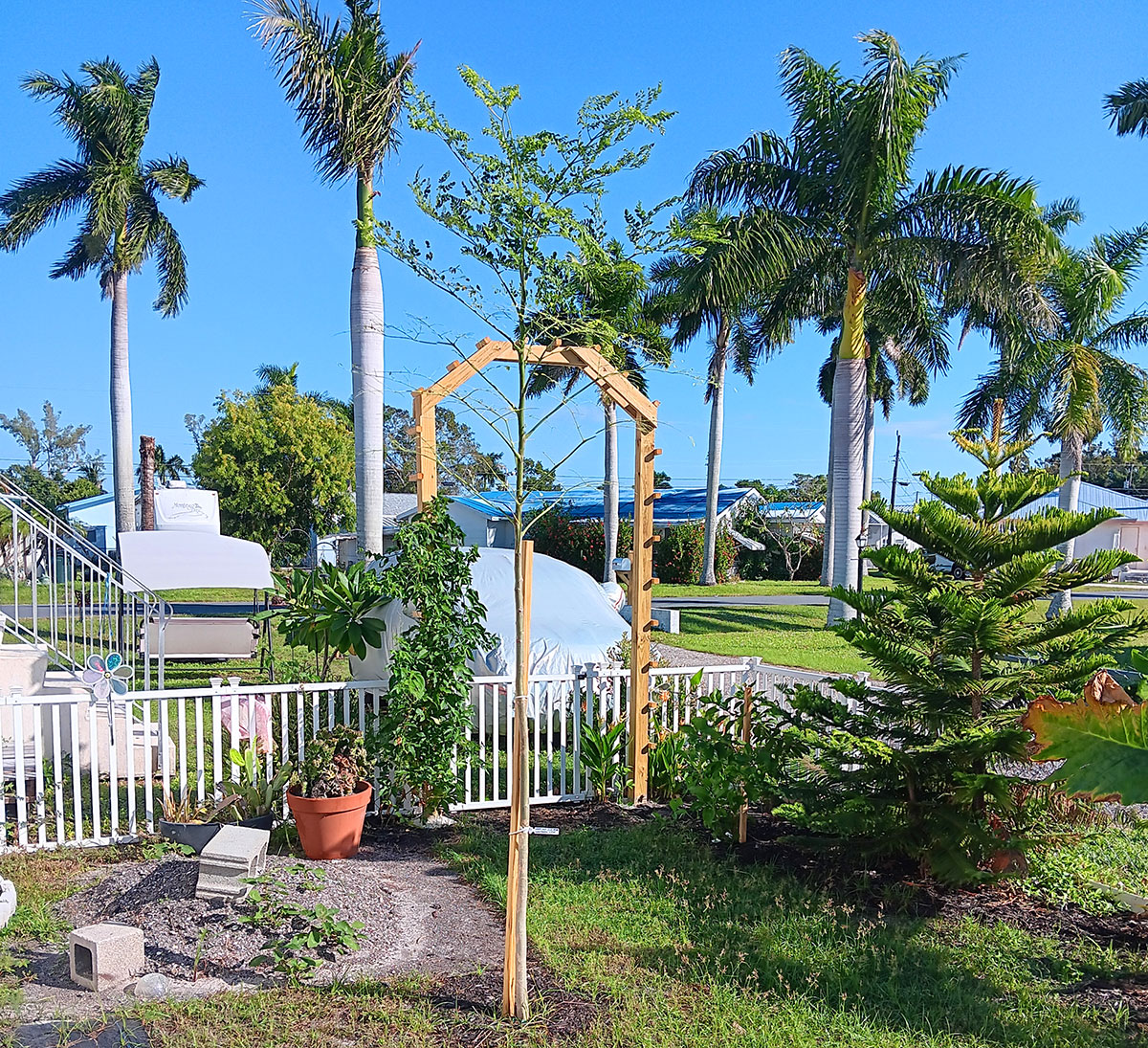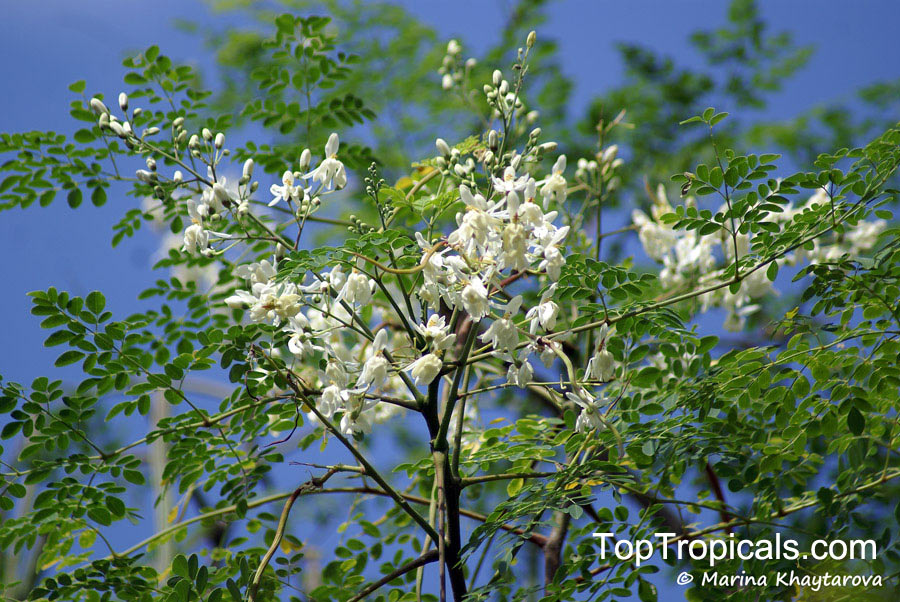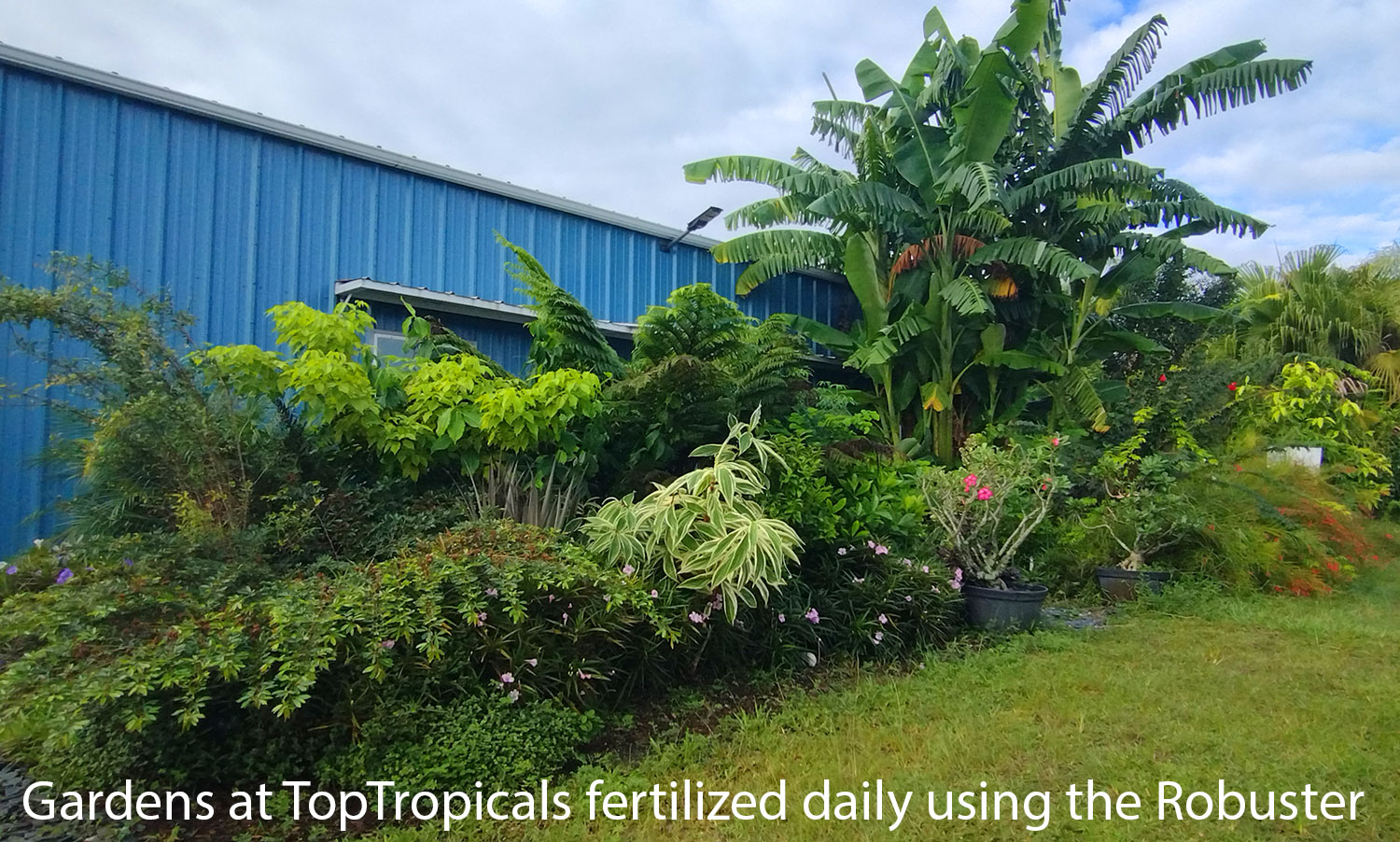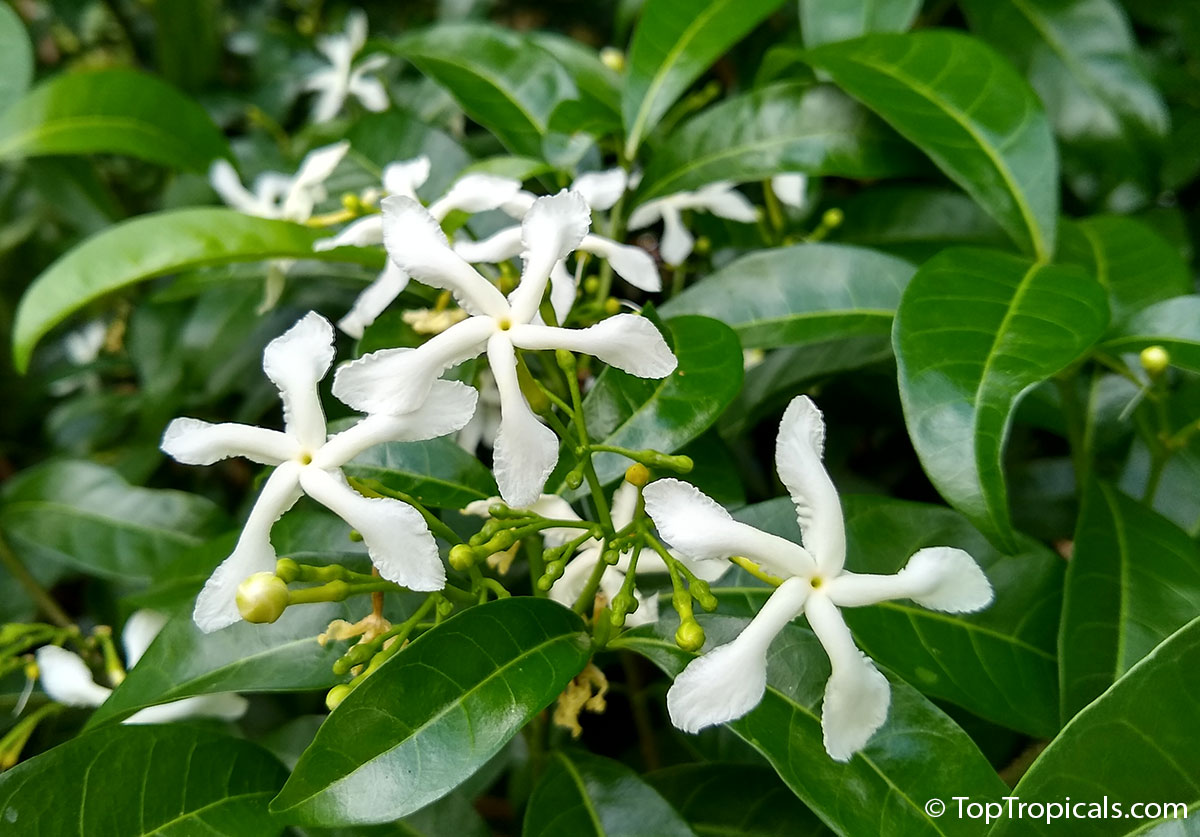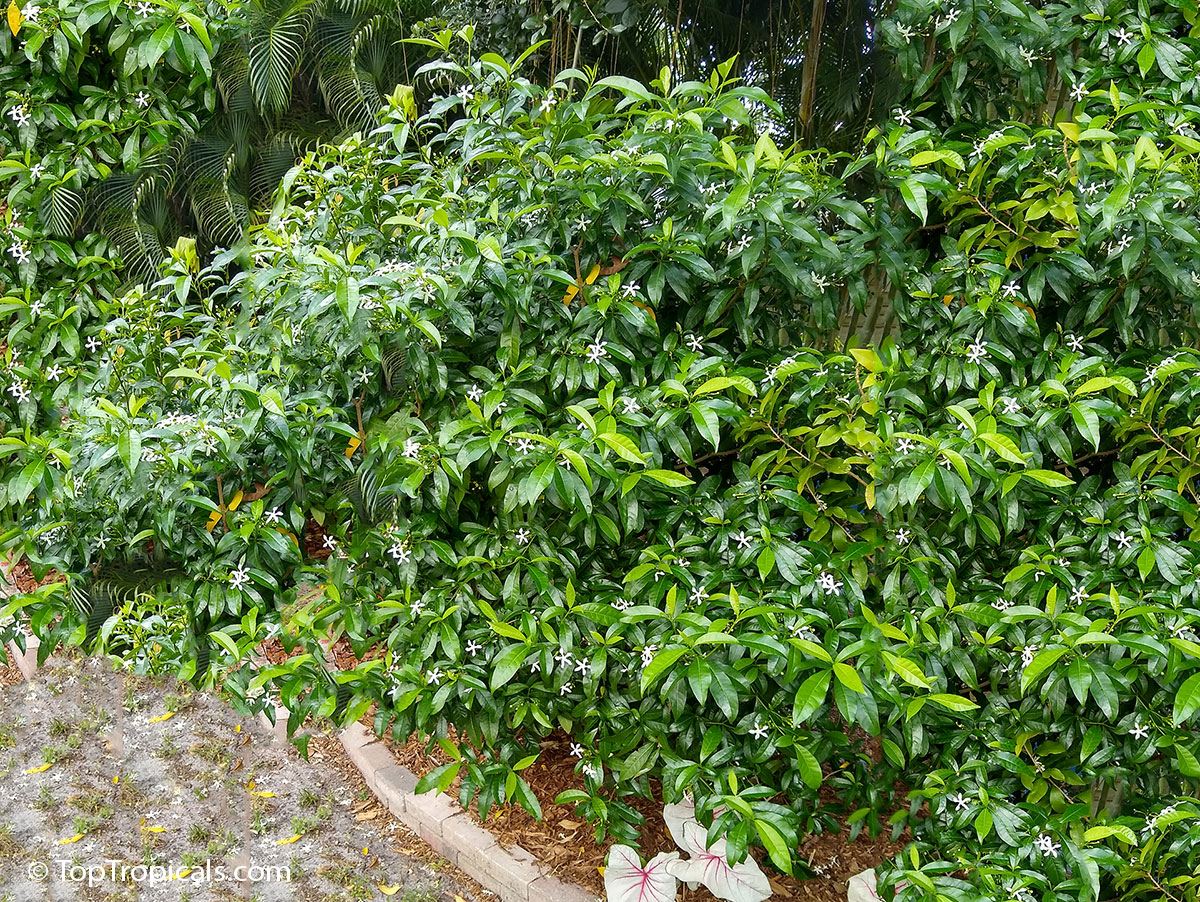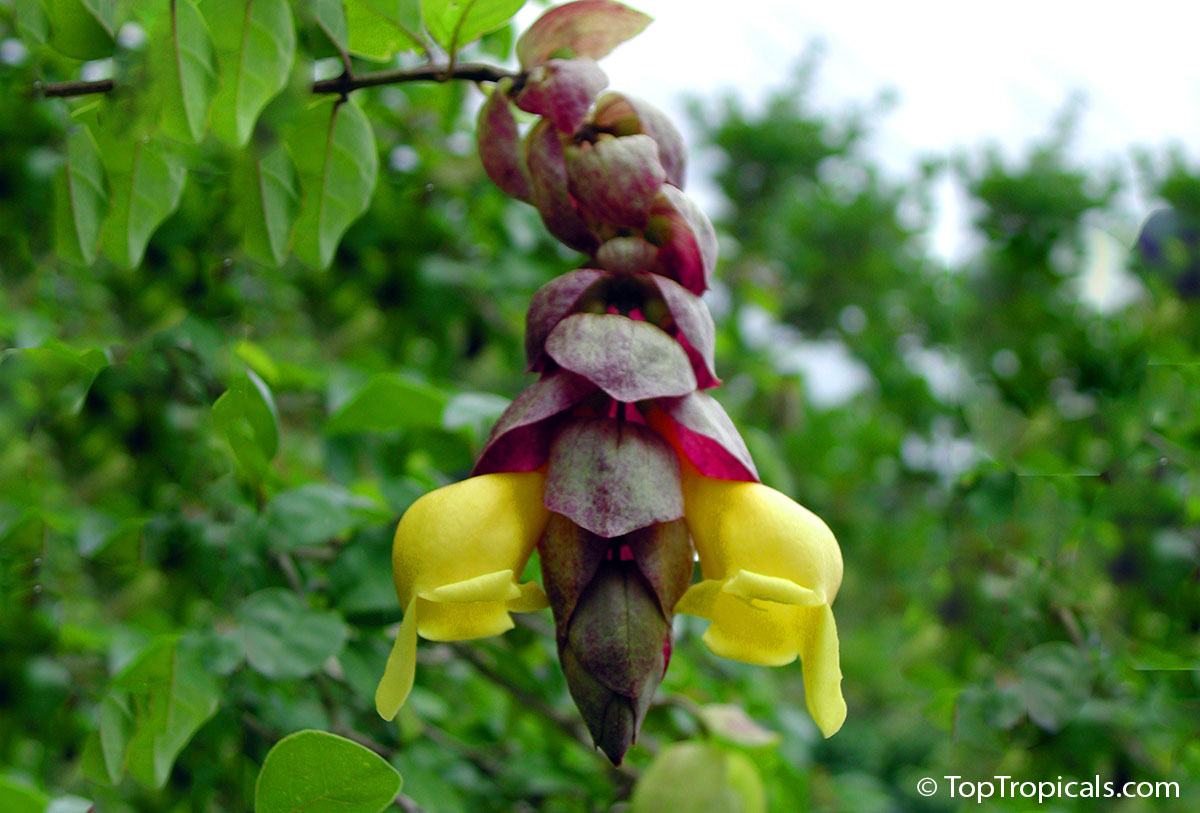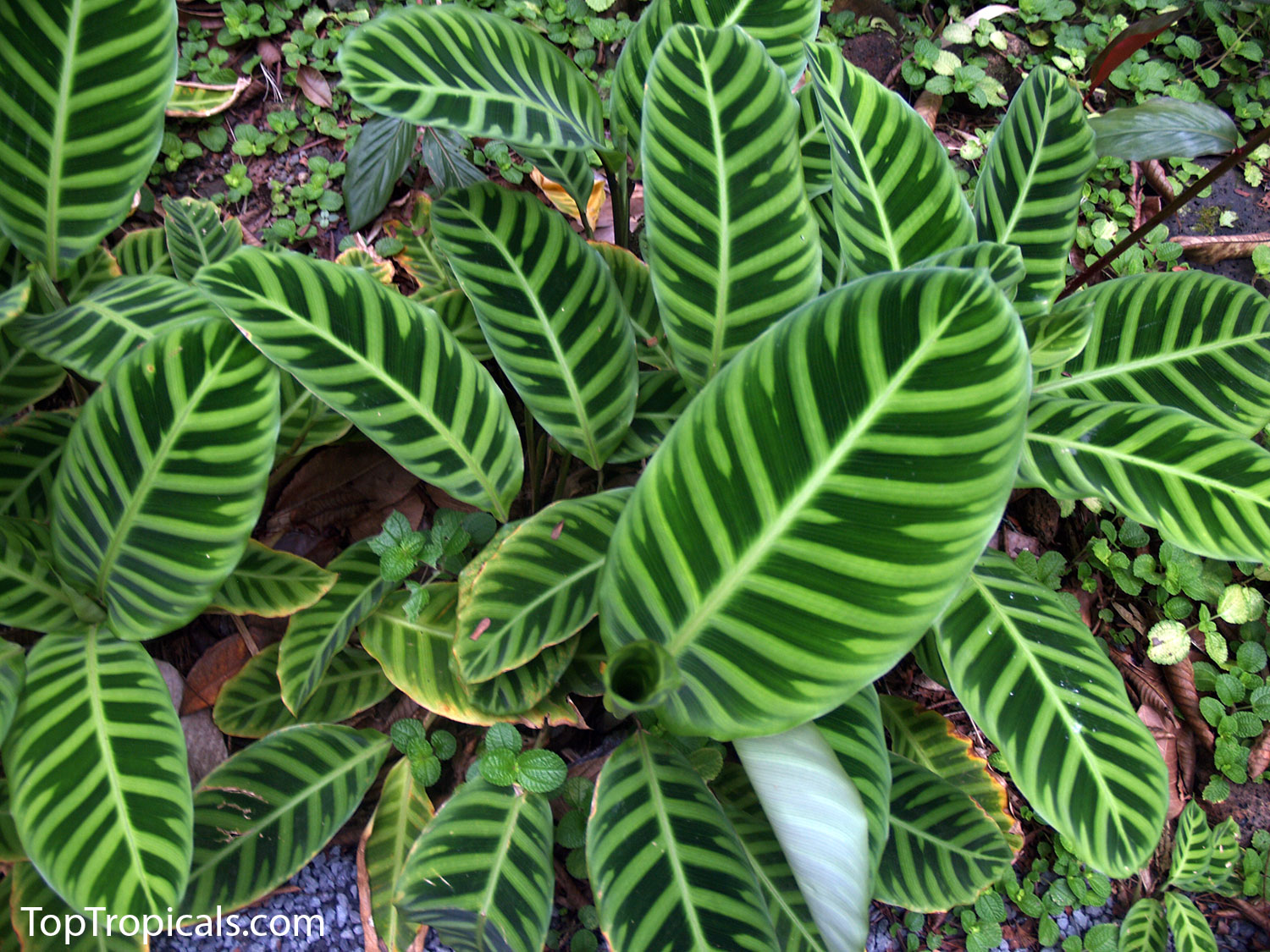Garden Blog - Top Tropicals
Date:
Growing Dreams and Happiness:
A Decade at Top Tropicals
By Kristi VanBenschoten,
Top Tropicals Manager
"The purpose of agriculture is not the production of
food,
but the perfection of human beings"
- Masanoby Fukuoka -
Working with Top Tropicals for the past decade, I frequently hear heartwarming comments from customers like, "Oh, wow, this place is breathtaking," "You must adore working here," "Isn't it marvelous to be in harmony with nature every day?"
The truth is, yes, all these sentiments hold true, and I genuinely cherish every single one of these comments; however... If you were to inquire about my most cherished aspect of working here, I would have to say that my absolute favorite part is when a husband calls and says:
"My wife and I embarked on a honeymoon five years ago, and we stumbled upon this exotic wonder called Helicona Lobster Claw. My wife was captivated by it. I would love to surprise her with one for our upcoming anniversary. Do you happen to have them?.."
...Or when a bereaved wife sends an email, expressing:
"My beloved husband recently departed, and he held a deep affection for Gardenias. I wish to plant one in our front yard as a living tribute to his memory. Could you kindly recommend one?..."
Or, it could be the heartwarming scene of a new father visiting with his young son, exclaiming:
"I have a dream of creating a bountiful food forest for my children with fruit and other edibles. I want them to experience the enchantment of watching food grow and to impart the wisdom of cultivating it. Can you guide me in this endeavor?"
Or the passionate plant collector who has spent years on a quest to acquire that one elusive specimen, the final piece of their adored collection. We spare no effort in locating it, and when we succeed, it fills me with an indescribable joy!
You see, here at Top Tropicals, we don't merely sell plants; we trade in precious memories, lofty aspirations, and vivid visions for a brighter future. We deal in dreams. These dreams are nurtured in pots with a touch of fertile soil and an abundance of love. This is the essence of what makes Top Tropicals so special to me:
We Grow Happiness…
Date:
Hedges
with Benefits
Reference Chart
Large and fast growing
Tithonia diversifolia - Sunflower tree
Acacia farnesiana
- Sweet Mimosa
Calliandra
surinamensis - Powderpuff
Aloysia virgata
- Almond Bush
Dombeya x wallichii - Tropical Hydrangea
Cornutia grandifolia - African lilac
Gmelina
philippensis - Parrots Beak
Hibiscus
mutabilis Cotton Candy - Mallow Hibiscus
Senna alata -
Empress Candle, Candelabra Plant
Medium or easy-trim
Acalypha hispida - Cat tail, Chenille plant
Bauhinia galpinii - Pride of De Kaap
Cestrum nocturnum
- Night blooming jasmine
Dombeya seminole
- Tropical Rose Hydrangea
Gardenia thunbergia - Forest
gardenia
Hamelia patens - Fire Bush
Hibiscus variegated
Snow Queen
Jasminum sambac
Maid of Orleans
Ochna integerrima
- Vietnamese Mickey Mouse, Hoa Mai
Odontonema callistachyum - Lavender Butterfly Bush
Odontonema cuspidatum - Firespike, Red
Rondeletia
leucophylla - Panama Rose
Tecoma stans - Yellow Elder
Short or slow growing
Aglaia odorata - Chinese Perfume Plant
Allamanda
schottii - Dwarf Allamanda Bush
Brunfelsia pauciflora Compacta - Dwarf Yesterday-Today-Tomorrow
Clerodendrum
incisum - Musical Note
Calliandra schultzii -
Dwarf calliandra
Gardenia
vietnamensis - Vietnamese Gardenia
Leonotis leonurus
- Lions Ears
Neea psychotrioides - Pigeon Plum, Hoja de Salat
Plumbago auriculata Imperial Blue
Garden Specimens
Combretum constrictum Thailand, Ball of Fire
Caesalpinia
pulcherrima - Red Dwarf Poinciana, Bird of Paradise
Clerodendrum
quadriloculare - Winter Starburst
Euphorbia
leucocephala - Snows of Kilimanjaro, Pascuita
Gardenia nitida - Shooting Star Gardenia
Hibiscus schizopetalus - Coral Hibiscus
Jatropha integerrima compacta
Kopsia fruticosa - Pink Gardenia
Malvaviscus x penduliflorus
Variegata - Summer Snow
Mussaenda philippica
x flava - Calcutta Sunset (Marmelade)
Plumeria pudica - Bridal Bouquet
Semi-Shade to Shade
Clerodendrum bungei - Glory Bower
Clerodendrum
paniculatum - Pagoda Flower
Eranthemum pulchellum - Blue Sage, Lead Flower
Clerodendrum
speciosissimum - Java Glorybower Mary Jane
Justicia carnea
- Pink Brazilian Plume, Jacobinia
Magnolia figo -
Banana Magnolia
Megaskepasma erythrochlamys - Brazilian plume
Thunbergia erecta - Kings Mantle
Tibouchina lepidota - Ecuador Princess, Jules Dwarf
Edible Hedges
Eugenia uniflora - Black Surinam Cherry Lolita
Camellia sinensis
- Tea Leaf
Hibiscus
sabdariffa - Flor de Jamaica, Karkade Sorrel
Laurus nobilis - Bay Leaf
Manihot esculenta
- Yuca Root
Nashia inaguensis
- Moujean Tea, Bahamas Berry
Sauropus androgynus - Katuk, Tropical Asparagus
Sauropus Variegata - variegated Katuk
Date:
Privacy Hedges with Benefits
What's the numero uno question we get bombarded with at Top Tropicals Nursery? Well, it's a real head-scratcher:
Q: "...Can you recommend me a flowering privacy hedge to spice up my yard's life? My current hedge is just a green wall and I'm tired of the monthly trim routine. I need something lively, fast-growing, and unusual if possible. No plain old ixora, please!.."
A: After over two decades of being the go-to advice-givers, we thought, "Why not spill the floral beans and share our tropical wisdom?" But where to begin? The jungle of flowering ornamentals is vast, and picking the perfect shrub is like finding the missing piece of a gardening puzzle. So, in our new column "Hedges with Benefits" we're dishing on those not-so-average shrubs that'll not only prettify your patch but also bring some serious practicality. Today's lineup is -
Top Ten Winners:
Fast growing flowering shrubs
Below is the top selection of spectacular flowering shrubs that can create a nice hedge or a natural screen within just a couple of seasons.
Tithonia diversifolia - Sunflower tree.
Grows super fast to a very tall dense hedge, and starts flowering right away. Full sun, very easy, not
fussy about soil or water. Winter bloomer.
Calliandra surinamensis - Powderpuff.
Pretty pink powderpuffs almost year around! Easy to prune.
Dombeya x wallichii - Tropical Hydrangea.
You can see this beautiful bush right at Top Tropicals gate. Winter bloomer, large lush leaves and huge, pink hydrangea-like blooms. Very large and fast growing, likes water, tolerates shade.
Acalypha hispida - Cat tail, Chenille plant.
All time favorite, everblooming with red cat tails! Full sun. Easy to control.
Hibiscus variegated Snow Queen.
Popular landscape bush with unusual look, red flowers over snow white variegation, very showy! Responds well to
pruning. Full sun.
Leonotis leonurus - Lions Ears.
Winter bloomer, great for low hedges. Covered with bright orange curious flowers,
medium sized, easy to control at 3-4 ft. Full sun.
Plumbago auriculata Imperial Blue
One of the most popular Southern hedge plants, everblooming with bright blue flowers, tolerant to drought, heat, and poor soils. Can be maintained short or tall (2-6 ft).
Eranthemum pulchellum - Blue Sage, Lead Flower.
Great for shady spots, winter bloomer with dark green leaves and unusual sky-blue flowers. Can be trimmed if needed. Nice and dense.
Clerodendrum paniculatum - Pagoda Flower. Happy in the sun or shade, easy plant. Loves water.
Tibouchina lepidota - Ecuador Princess, Jules Dwarf.
Sun or shade, blooms on and off throughout the year. Beautiful Purple
Princess!
Date:
Veterans Day: November 11
Special Deals
Our special Veterans Day sale on tropical plants is a salute to those who served! Enjoy this discount code - a small token of gratitude for our heroes:
VETERANS23
Your savings with this code:
5% off orders $100+
10% off orders $150+
15% off orders $200+
Excluding S/H. Exp. 11-12-23
Mango & Avocado Super Sale!
Instant 20% off Mango and Avocado trees
Celebrate Veterans Day with the taste of the tropics! Indulge in our exclusive offer on Mango and Avocado trees, available now at unbeatable prices. With the discount code above, your qualified purchase of these trees can be as low as:
$64 for Mango trees
$61 for Avocado trees
Hurry up! Limited time quantities - while supply lasts!
Date:
Cat
Horoscope
Scorpio Zodiac Cats 10/24-11/21
By Alex Butova, the Witch of Herbs and Cats
In the photos: Typical Scorpio cat Sonya, born 11-4-2010.
How to know the astrological sign of your cat?
The astrological sign of a cat can be determined by either their date of
birth or adoption, as adoption is often considered a second birth for
cats...More >>
Love all around them, be
they cats, other animals, or humans...
Scorpio Cats exhibit a profound passion for life and love, extending not only to their own romantic affairs but also to the relationships of those around them, be they cats, other animals, or humans. These feline individuals thrive on being intricately involved in everything...
Scorpio Cats are inclined to assert dominance in any situation...
Scorpio Cats are known for their intense focus. Once they set their sights on something, they pursue it relentlessly, demonstrating fearlessness and a confrontational spirit...
One of the most distinctive traits of Scorpio Cats is their unwavering fidelity and loyalty. You've heard stories of cats separated from their families who travel miles to get back to them? They were probably all Scorpios!..
Scorpio Cats harbor a fondness for tall flowering shrubs and fragrant creepers with large blossoms. They possess a unique connection to scents, and while ordinary cats may recoil from potent odors, Scorpio Cats exhibit a particular affinity for select aromatic plants. For instance, while most cats are drawn to Catnip (Nepeta cataria) and Valerian root (Valeriana officinalis), Scorpio Cats go wild for the fragrances of Patchouli and Chinese Perfume Plant (Aglaia odorata). Even female perfumes containing oils from these plants bring the Scorpio Cat bliss, as they savor the scent and affectionately attend to the "mistress" of this aroma...
Date:
How to grow a happy Moringa Tree
Q: We purchased some tropical edible and medicinal plants from you in August this year. I have a question pertaining to our Moringa tree. When we purchased it, it was about two foot tall. It has put on tremendous growth and is now a little under ten foot tall. My question is, should a Moringa be losing lower leaves at this point? The bare limbs are still green and the top looks to have healthy green leaves.
A: Thank you for choosing our Moringa tree, and sharing the picture. It's great to see that your tree appears healthy and happy - it's a resilient plant. Given the relatively dry Fall we've experienced this year, a little extra water can make a significant difference.
Here are some suggestions to ensure your Moringa thrives:
Watering: While Moringa is generally drought-tolerant, during dry periods, in addition to relying on your lawn sprinkler system, add some extra water with a hose. Adequate moisture is crucial for maintaining healthy foliage.
Pest Control: Moringa is not only a nutritious plant for humans but also attracts pests that appreciate its medicinal properties :) If you notice insect damage on the leaves, consider spraying with Neem oil or using an over-the-counter systemic insecticide containing imidacloprid or a similar ingredient.
Seasonal Behavior: Moringa trees are semi-deciduous to deciduous, and their leaf-shedding behavior can vary depending on the climate. In Florida, for instance, it's common for Moringa trees to shed leaves in the Fall. However, this is a natural process, and you can expect new growth in the Spring.
Fertilizing for Vigorous Growth: To promote the most vigorous growth of your Moringa tree and other plants in your garden, consider implementing a fertilizing program. If using dry, slow-release fertilizers, apply them only during the active growth season: from March through November. If you're looking for a year-round solution, liquid amino acid-based formulas like Sunshine Boosters can be a great option. You can easily add them to your watering routine or use injectors like The Robuster for convenient and consistent feeding. If you're planning to expand your garden with other medicinal plants or an edible forest, The Robuster smart fertilizing system is an excellent choice, offering the most efficient, care-free way to nourish your plants with natural nutrients throughout the year.
This garden doubled the size during just one season under the Robuster care.
Date:
How to
establish Tabernaemontana
and get more fragrant blooms
Q: I purchased Tabernaemontana australis from you back in June of this year and it recovered just fine, but the new growth got some chlorosis. Older leaves still look normal. The flowers also look normal but lack fragrance. Since I live up north, I have it in a heated greenhouse for the winter, with a grow light to compensate for the short days. I have it in a 10 inch clay pot in a mix of equal parts standard indoor potting soil, peat moss, and perlite. It gets fed with half strength 10-10-10 about once a month on average. Is there some specific culture that you would recommend for this plant ? I really love it and want it to thrive.
A: Tabernaemontana is a plant that may take some time to establish itself, and leaf chlorosis often becomes a common issue when the root system is not well-established. This symptom is indicative of Iron deficiency, and possibly other micro-element deficiencies, such as Boron or Molybdenum, which become more apparent when the plant receives excessive water. This problem tends to intensify as temperatures drop, particularly when a combination of cool and wet conditions prevails. It's worth noting that your potting mix seems to be appropriate for this plant.
In light of these circumstances, we recommend the following steps:
1) Reduce watering during the cooler season, especially when daylight hours are shorter. Allow the top layer of the soil to dry before watering again.
2) Consider supplementing with microelements using a product like Sunshine Superfood. You can apply this as a foliar spray and mix it with your watering can.
3) Maintain your regular fertilizing program throughout the
winter months, but ensure that you use only liquid amino-acid fertilizer, such
as
Sunshine Megaflor. Follow the instructions on the label for the correct
dosage and apply it with each watering, even during the winter. Since you will be
reducing amount of water, the amount of fertilizer also will be adjusted
accordingly.
Important: do not use any dry fertilizers during winter months
(Nov-March).
Regarding the fragrance of the flowers, they typically emit a mild, sweet scent, although it may not be as potent as that of gardenia or jasmine. The strongest aroma usually becomes more prominent during warm (but not excessively hot) and humid conditions, particularly in the morning hours. As the plant grows larger and healthier, the fragrance should become more intense because the flowers produce more essential oil when the plant is robust. You may also apply Sunshine Honey supplement to improve flower quality and fragrance strength.
Date:
Cat of the day:
Shaka. The Tail of Two Kitties...
By Kristi VanBenschoten
For those of you who have been following the Cat of the Day stories, you may remember the heartbreaking story about Little Raja... When Raja passed, I was heartbroken and vowed, "No more new cats." Well, wouldn't you know, I would eat those words...
One of our shipping experts, Rob, came in and said that a feral cat
around his house had just given birth to a kitten on his front porch, but the
mother had left and not returned. I immediately asked him to go get me the
kitten, knowing it was going to be cold and hungry and could not be left without
warmth and food for long...
Rob rushed off to get the kitten and, within what felt like the blink of an
eye, returned with the tiniest (about 4 inches), yet astonishingly vocal,
kitten I had ever met.
And this is what happened next...
Date:
NEW
VIDEO:
Happy Parrots Beak
Introducing Parrots Beak: a whimsical and vibrant shrub, with funny flowers that mimic the playful antics of a parrot, with its pendant branches and joyful handstand-like leaves... This low-maintenance, sun-loving plant adds a touch of the tropics and endless whimsy to your garden, making it a butterfly magnet!
Looking to add some funny Parrot's Beak to your life? Order large plants - Gmelina philippensis - Parrots Beak - right now while we have them!
Subscribe to our Channel:
Stay updated with TopTropicals Videos by subscribing to our channel at YouTube.com/TopTropicals and get our latest video news of what is fruiting and blooming!
Date:
Calathea Zebrina: Nature's Zebra Striped Star
Q: Can you recommend a showy houseplant for a living room that doesn't need much care?
A: Meet the Calathea Zebrina - Zebra Plant, the zebra-striped sensation straight from the Brazilian rainforests. This charismatic plant is like a piece of living art for your home! The Calathea Zebrina isn't just a houseplant; it's a conversation starter and a slice of jungle magic right in your living room. Get ready to embrace the zebra-stripes and let your home's wild side shine!
Zebra Stripes with a Twist:
With its bold dark green stripes on a velvety light green canvas, the Zebra
Plant adds a touch of nature's whimsy to any room. It's like having a zebra
with a green thumb as your housemate. The underside of the leaves are purple
and not always visible because leaves grow horizontally (although some will
curve or grow more upright).
Low-Light Lover:
Not only is it easy on the eyes, but it's also easy to care for. The Zebra
Plant thrives in low light conditions, so you don't need to rearrange your
whole house just to keep it happy. It even tolerates a little over-watering
which all of us tend to do with house plants.
Green with Envy:
This plant may make your other houseplants a bit envious with its
captivating appearance. Its zebra stripes aren't just a fashion statement; they're a
botanical masterpiece. Keep it even greener with Sunshine Robusta plant food - safe to use year around!
A Slice of Serenity:
In a world that's always in a hurry, the Zebra Plant is a gentle reminder
to slow down, appreciate nature's beauty, and bring a touch of tranquility to
your space.
